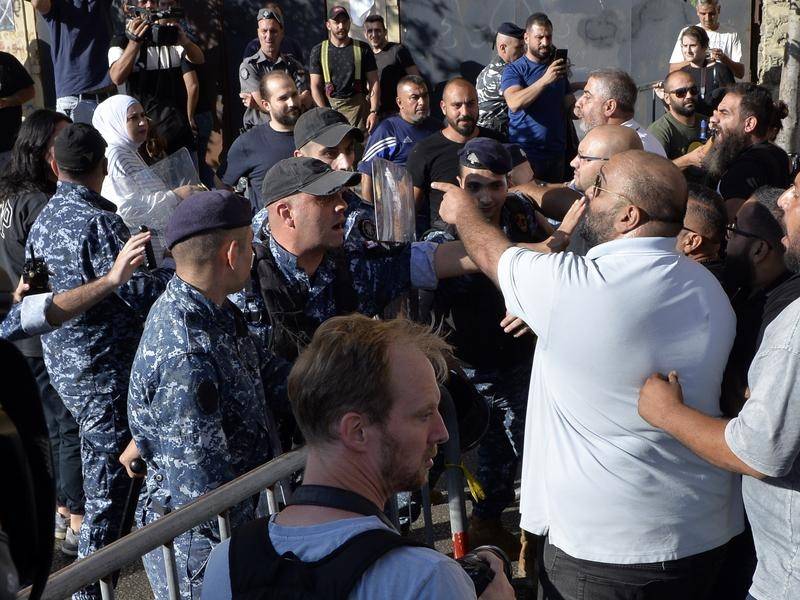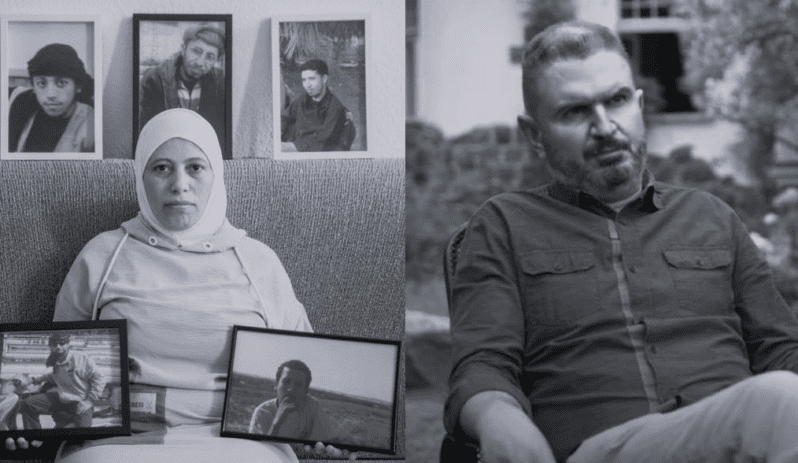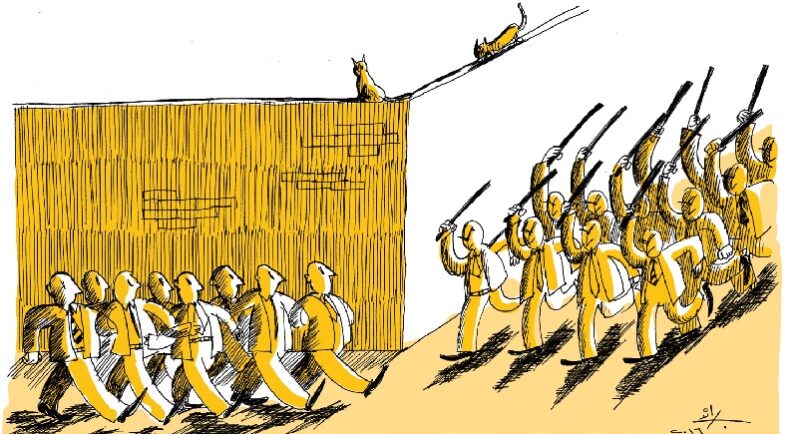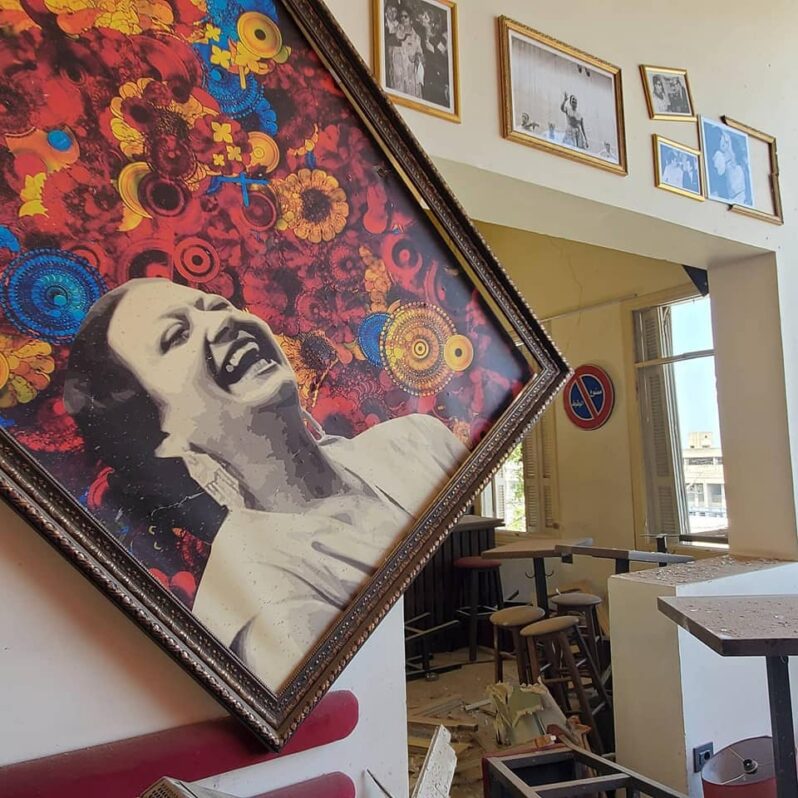The Political Bias of Egyptian Public Prosecution
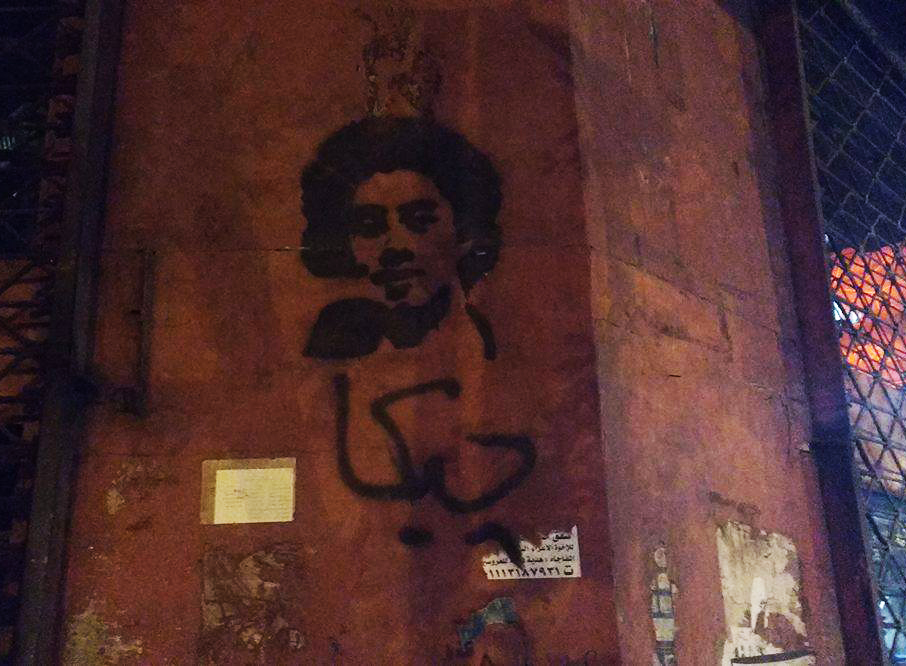
On September 12, 2017, the Egyptian public prosecutor suspended investigations into the killing of martyr Gaber Saleh, known as “Gika”.[1] The case is linked to the event commonly referred to in the media as “The Second Mohamed Mahmoud.”[2] The decision was made on the grounds that investigations had not led to the identification of the perpetrator despite the fact that the victim’s lawyer had presented visual evidence, made available on social media sites, showing the moment of Gika’s death at the hands of a Central Security officer. The decision has raised questions about the seriousness with which the prosecution has conducted investigations over the past five years.
This is not the first time that this question has been raised, either. In the seven years since the revolution, the prosecutor has suspended numerous investigations in cases involving the killing of demonstrators during protests and clashes between demonstrators and police. The public prosecutor has acted differently in cases in which the victim is a police officer, rather than a demonstrator. In these cases, the prosecution interrogates demonstrators rigorously and does not hesitate to place them in preventative detention in order to obtain any information that might help identify the perpetrator.
These inconsistencies speak to the public prosecutor’s bias in favor of the executive branch when it comes to political cases. Such bias leads to a disregard for rights that are legally and constitutionally guaranteed to citizens, not to mention the exemption of numerous officers suspected of killing protesters from facing trial. This article discusses prosecutorial bias and its effects, including the influence of the prosecution’s hierarchical structures and the near total absence of independence in its work.
The public prosecutor’s disregard for preserving evidence: a means to exonerate the police
In the course of its criminal investigations, the public prosecutor generally relies on evidence and the seizure of items used in the commission of crimes. Even basic physical evidence can be a key element in the identification of a perpetrator. Therefore, the public prosecutor must promptly go to the scene of the crime as soon as they are aware of it, before questioning begins or statements are taken. This is done out of a concern that the scene could be tampered with or its details altered. Police, along with experts and technicians from the appropriate authorities, assist the prosecutor in this process.[3]
It is worth noting that the Code of Criminal Procedure uses vague expressions and general terms to describes the work of the public prosecutor in these matters. For this reason, the prosecutor’s office has adopted a judicial instruction manual, which is issued each year by the Prosecutor General. When the public prosecution neglects to conduct a serious, prompt inspection of the crime scene, or does not take custody and control of weapons used to kill demonstrators, it is violating both legal texts. These violations make the prosecution complicit in helping perpetrators conceal incriminating facts, and thereby depriving victims of their rights.
Gika’s case is an example. The public prosecution did nothing to inspect the scene of the crime, and it did not collect the weapons of police officers present in the square that day. This would have allowed them to identify whose ammunition was missing and as a result narrow down the number of suspects from among the Central Security Forces––particularly since forensics confirmed, after a ballistics investigation, that the police used live ammunition to break up the clashes.
In neglecting to do these things, the public prosecutor violated its own instruction manual, which dedicates an entire section to investigating members of the police.[4] This section makes explicitly clear the need for prompt investigations when members of the police are accused of crimes, and that their weapons must be promptly seized and retained to ensure they are not tampered with––even if this requires the public prosecution to store them in their own facilities. The public prosecutor’s refusal to follow these instructions allowed the police to conceal evidence that could have incriminated them, including weapons as well as the file listing the names and information of officers who had been on duty where the incident took place.
Compare that to the speed with which they went to the location where Shaimaa al-Sabbagh was killed on the anniversary of the revolution in 2015. In that case, the public prosecution ordered that all weapons used by officers during that incident should be taken and safeguarded. They did this in response to widespread outrage in Egyptian society at Shaimaa’s murder, which nearly set off more mass protests. Notably, the executive branch had attempted to blame Shaimaa’s killing on the Muslim Brotherhood; it was only a video recording of the officer responsible that made it impossible for them to do so, and which prompted the public prosecution to take swift legal action against the perpetrator. This illustrates how public prosecution can be used either as a means to pacify public opinion, as happened in this case, or alternatively as a means to acquit police officers, as in cases mentioned previously.
Gika’s lawyers also presented the prosecution with essential video and photographic evidence showing the moment that an officer shot Gika, causing him to fall to his death. But the prosecution ignored this and other evidence presented by lawyers, witness statements, and the forensic report incriminating an officer from the Ministry of Interior.
The prosecution had taken the same approach in the killing of Mohamed El-Shafey in events that took place on the second anniversary of the revolution in 2013. In that case, it also suspended investigations due to a reported failure to identify the perpetrator after two years of inquiries. In multiple instances, the public prosecution has also disregarded recordings made by public or private cameras located in the vicinity of clashes in cases where recordings could have been used to convict the police. For example, in one case in connection with the “Land Protests” [against the sale of two Egyptian islands to Saudi Arabia], the Qasr al-Nil prosecutor withdrew his request to view the contents of surveillance cameras mounted near the scene of the incident under investigation, citing the need to move to a speedy trial.[5] These incidents corroborate the public prosecution’s inclination to exonerate police officers––particularly given the fact that suspects and their lawyers have demanded the release of camera footage to confirm allegations that police held them in arbitrary detention and used violence against them while they were detained.
Interrogating security officers and demonstrators, and what comes after: prejudices and sham interrogations
The public prosecutor has also adopted discriminatory policies against demonstrators, favoring police while interrogating suspects. Not only does the public prosecution typically commit multiple violations during interrogations of those charged in political cases, it also disregards police violations committed against these individuals before they are brought to the public prosecution, whether in the form of arbitrary detention or torture that takes place within detention centers. Likewise, during interrogations, members of the public prosecution direct leading questions at suspects based on their political opinions rather than the incident in question, reflecting their prejudices in favor of the executive branch.
The questioning of individuals arrested in April 2016, who were accused of taking part in demonstrations over the Egyptian sovereignty over the islands Tiran and Sanafir, is a case in point. The public prosecutor questioned suspects about their political affiliations and their positions on the maritime border agreement with Saudi Arabia, and whether they had participated in previous protests, before asking questions pertinent to the incident under investigation––which was a matter of protesting without a license and blocking traffic.[6]
As for the case of the killing of Mohamed El-Shafey, the bias went so far as to accuse them of killing officers and setting fire to armored vehicles and ordering their preventative detention for a period of nearly two years. Meanwhile, no criminal charges for the deaths of demonstrators at the same event were brought against any police officer, and, as pointed out above, the case was suspended after two years of investigations.
Moreover, in many cases, the prosecution transfers suspects to police stations for interrogation, and relies on the police as the sole witnesses against protesters. Sometimes, it uses police officers as secretaries to interrogations, despite the fact that they are considered opposing parties in the case.[7] The public prosecution works in a completely different manner on cases in which police officers are accused of crimes; officers or police department officials are called as witnesses against protesters, and have not been charged with the murder or attempted murder of protesters. In the cases of the land protests, for example, the public prosecution ignored allegations made by the accused parties of rights violations committed by police forces including arbitrary detention for extended periods of time and the fabrication of charges against them.[8] The public prosecution also refused to transfer those accused to a forensic doctor in order to confirm that their injuries were the result of torture. And in a case in which an officer was accused of opening gunfire against citizens in 2011, leading to the death of one and the injury of another, the public prosecutor decided not to pursue the case. The decision was based on the officer’s claim that he had been pursuing the victims because they were carrying drugs, ignoring both technical evidence and the statements of the second victim.[9]
The improper relationship between the public prosecution and the Interior Ministry can be seen in the way the prosecutor’s representatives rely on evidentiary reports prepared by employees of the Interior Ministry without checking or verifying the extent to which they are valid. The reports, of course, reflect the Interior Ministry’s hostile views of demonstrations and protesters. This occurs despite the fact that the public prosecutor’s instruction manual prohibits the policemen who edit evidentiary reports from writing opinions that reflect their biases.[10] In this way, the police apparatus, despite being an opposing party in a legal case, becomes a tool for convicting demonstrators––because all investigative reports prepared by the police support indicting the suspects of the charges brought against them.
Likewise, the police apparatus has become the means by which its own officers are exonerated, through the preparation of reports that deny the accusations of murder brought against them and pin them instead on the protesters themselves or on thugs (baltagiya) carrying weapons and allegedly hiding among protesters.
All of this makes plain the executive branch’s domination of the workings of the public prosecution, not only in its decisions, but in the way it presents evidence incriminating demonstrators and refuting accusations brought against officers. The executive branch also uses the public prosecution as a weapon to deter opponents of the regime, penalizing them for their political stances and their exercise of civil and political rights guaranteed to them by domestic and international law.
Facilitating all this is the fact that the public prosecution encompasses two forms of authority: conducting investigations and directing indictments. This means that in some situations, particularly those with a political nature, the prosecution may be on both sides of a case. This overlap violates international standards pertaining to the public prosecutor’s independence, as well as the guarantee of a fair trial.[11][12] Moreover, the prosecution is currently organized as a hierarchy, which violates these standards as well: based on their rank, members of the prosecution are subject to the instructions and orders of those who rank above them. All are subject to the instructions and orders issued by the prosecutor general. Such a hierarchy makes it possible to control members of the prosecution.
The effects of this arrangement can be seen in the cases related to the land protests, when the prosecutor’s deputy, upon completing his inquiries, awaited the prosecutor general’s decision about whether the investigation should go forward or not. This is a violation of the prosecution’s independence and illustrates the lack of neutrality in its work, particularly in situations where the accused are adversaries of the current regime.[13] The public prosecution also dismissed a case involving the killing of prisoners in the Appeals prison in Cairo during the 2011 revolution––after conducting the necessary interrogations and presenting evidence that condemned the police.[14] This suggests that higher-ranked members of the prosecution, or someone within the executive branch, interfered in order to prevent the prosecution of the officers.
The judicial instruction manual for prosecutors grants members of the public prosecution the discretion to shelve a case if they deem it necessary for the sake of public interest, without defining what “public interest” means.[15] This helps shield the prosecution from accountability when they decide not to prosecute a case. As a result, deputies of the public prosecution have broad discretionary powers to assess whether a case should be brought to trial or not. The public prosecution therefore has a legal pretext for discontinuing investigations into the deaths of demonstrators, or any case brought against police officers for that matter, without being held accountable.
Conclusion
The interference of the executive branch with the work of the public prosecutor is nothing new. But this interference has changed noticeably since the January 2011 revolution, given the high number of political cases that have coincided with demonstrations and acts of violence and repression against protesters. As a result of the poor reputation of the state security prosecution during the Mubarak era, its cases have been referred to the public prosecution after the revolution––with clear interference from the executive branch when it comes to decision-making. This has undermined the public prosecution’s independence and its role as part of a greater judicial system, and negatively affects its role in establishing community justice.
As a result, the public prosecutor has become a tool for exonerating police or shielding them from trial. This undermines the principle of fair and equitable trials, and makes it impossible for citizens to reclaim their rights as victims of crimes. There is no equality of legal opportunity for crime victims, who are treated according to their position in society. Public prosecution has emerged as a new partner of the current government, creating a sense of aversion towards it within society. In the absence of a proper role for the public prosecution, and with the executive branch’s increasing control over its decisions, police impunity has become further entrenched. This has led police officers to commit more acts of violence against citizens. Cases of torture in police stations have also increased.
This article is an edited translation from Arabic.
[1] The Administrative Court, in a ruling issued December 16, 2014, deemed Gika to be a martyr of the revolution, and this entailed the payment of financial compensation to his family; this was the first ruling of its kind issued by the Administrative Court.
[2] The events known as “The Second Mohamed Mahmoud” occurred in November 2012, when protesters went to Tahrir Square to express their rejection of the constitutional decree issued by former president Mohamed Morsi, and demanding a speedy trial for those responsible for the deaths of martyrs of the January 2011 revolution.
[3] Article 24 of the Code on Criminal Procedure, issued as Law 150 of 1950.
[4] Article 564 of the public prosecutor’s instruction manual stipulates that “members of the public prosecution must initiate investigations of events in which members of the police are accused, taking control of their weapons, and facilitate the task of the police representative, if present, in undertaking cautionary measures to prevent tampering with weapons, even if this requires depositing them in the prosecutor’s storage facility, and ensuring that said procedures are carried out in the presence of a member of the public prosecution and confirmed in the record.”
[5] “Land Cases: An analysis of the facts of the arrest, detention, interrogation, and trial of the demonstrators of April 2016,” by the Egyptian Center for Economic and Social Rights.
[6] Ibid.
[7] Ibid.
[8] Ibid.
[9] Huda Nasrallah, “In whose interest does the people’s lawyer work? Revisiting the independence of the public prosecution, and its manifestation in criminal justice after the revolution,” published by the Egyptian Initiative for Personal Rights, August 2014.
[10] Article 117 of the public prosecutor’s instruction manual stipulates that “judicial officers shall not record their opinions in writing in reports sent to the prosecution.”
[11] “Guidelines on the Role of Public Prosecutors,” issued by the 8th United Nations Congress on the Prevention of Crime and the Treatment of Offenders, held in Havana, August 27 through September 7, 1990.
[12] For example, see Section F regarding the public prosecution, in “Guidelines on the Right to a Fair Trial and Legal Assistance in Africa.”
[13] “Land Cases: An analysis of the facts of the arrest, detention, interrogation, and trial of the demonstrators of April 2016,” by the Egyptian Center for Economic and Social Rights.
[14] Huda Nasrallah, “In whose interest does the people’s lawyer work? Revisiting the independence of the public prosecution, and its manifestation in criminal justice after the revolution,” published by the Egyptian Initiative for Personal Rights, August 2014.
[15] Article 807 of the public prosecutor’s instruction manual states: “the prosecutor may, even if the incident has been confirmed and the elements of the crime are available, elect not to prosecute a case, if it is in the public interest that a criminal case not be brought against the accused…this depends entirely on the acumen and discretion of the prosecution. In these cases, the case is deemed unimportant, and the accused should be warned against repeating the offense in the future.”
